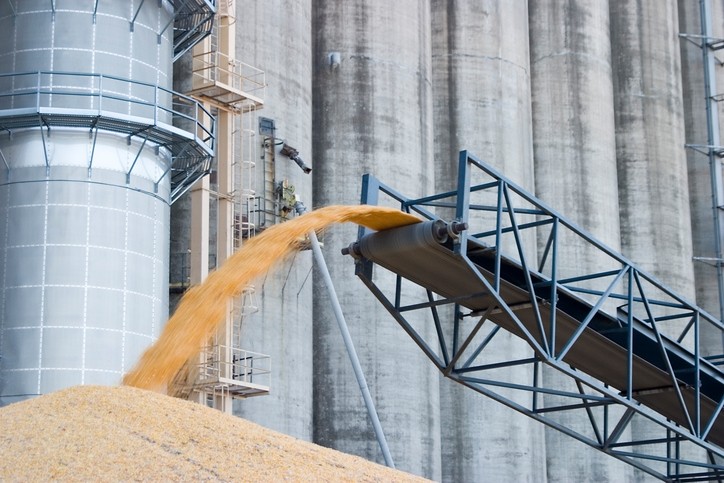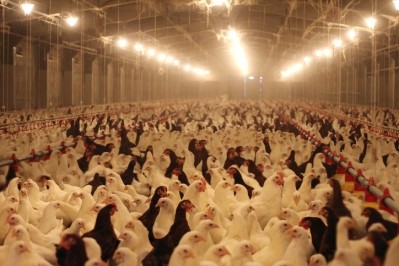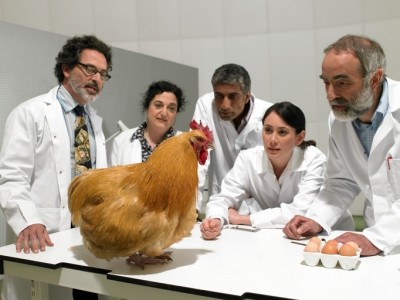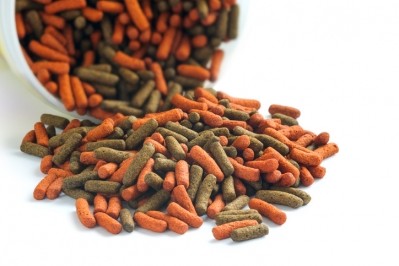Special Edition: IPPE reports
ADM launches feed enzyme line at IPPE

We caught up with ADM’s Laura Merriman, swine nutritionist, and Kristjan Bregendahl, poultry technical manager at the International Packaging and Processing Expo (IPPE) in Atlanta to hear more about the product launch.
The first product in the Empirical line is Empirical NSP (non-starch polysaccharide), which is intended to improve fiber digestion for poultry, said Merriman. A related product focused on use in swine diets is set to be released later this year.
“ADM is getting into enzymes,” she told FeedNavigator. “The first enzyme that we’re focusing on is an NSP enzyme – what that means is when we include higher levels of fiber [in feeds] there are portions of those ingredients that the pig or chicken cannot utilize well, so this is just like phytase, this is an ingredient that comes in and helps break down ingredients – targeting specifically those fibrous portions. If you’re including DDGs or other high-fiber ingredients, you get more energy out of those ingredients instead of them just going out the backend of the animal.”
Expanding ADM’s portfolio to include enzymes is part of an effort to provide more options for producers, she said.
“Not only does it give us a larger portfolio, these enzymes are working directly on the ingredients that we’re offering,” she said. “This is helping the producer get the most out of the other ingredients we offer – it really helps us in multiple ways.”
In addition to work with feed ingredients, ADM does have a history of industrial enzyme use, said Merriman. “This is just a way of branching out our knowledge from the other areas of the industry into specialty animal nutrition,” she added.
Enzyme production and future developments are being done in-house, added Bregendahl. “Many enzyme companies buy and relabel, so these will be in-house enzymes that are developed by us, produced by us and distributed by us,” he added.
The move comes shortly after ADM’s announcement of a joint development agreement signed with Qingdao Vland Biotech Group Co in China. That statement included that the company would be establishing a new enzyme research lab in California.
Enzyme product and expansion
Initial production of the enzyme is focused on the markets in the US and North America, said Merriman. However, it will be released on a global basis as the approval processes in those regions are completed.
In addition to aiding in the breakdown of fibrous materials in animal diets, the enzyme has been formulated to be heat tolerant and survive the pelleting process, she said.
“There is only so much space in that diet, by adding the enzyme you can get a lot more energy and be able to meet the requirements of that animal,” she said. “It allows for more flexibility.”
It also is intended to support the additional use of by-products or lower cost ingredients in diets, said Bregendahl. The enzyme product includes a series of different enzymes with related abilities.
“We have multiple enzyme activities in here just to build on,” he said. “We talk about fiber, but fiber is a lot of different things, so we need a lot of different enzymes working on the different types of fibers and that’s what this enzyme here will do.”
“We guarantee two different enzyme activities in the product, but we know there are many more,” he added.
The enzymes guaranteed in the product are xylanase and cellulase, said Merriman. It is generated during a single, submerged fermentation process.
“The objective for the producer is to be able to have the same performance in the animal but at a lower cost,” she said. “So when you include that enzyme you can help them use those less costly ingredients but still have the same performance, that’s really the goal here.”
In a feeding trial with broilers that ran for 42 days, the company saw 4 points of improvement to the feed conversion ratio, reported ADM. There also was an improvement in average daily gain and average daily feed intake.
An in vitro experiment examining use of the enzyme compared to a control and competing enzyme found improved dry matter digestibility for several blends of feed ingredients including: 75/25% corn/soybean meal (SBM); 65/20/15 corn/DDGs/SBM; 50/40/10 corn/DDGs/SBM; 35/60/5 corn/DDGs/SBM; and 25/60/5/10 corn/DDGs/SBM/soy hull.
There also are ongoing commercial trials looking at use of the enzyme in swine diets and an in-house trial evaluating the product with layers, said Bregendahl. And it is being used in the formation of commercial diets.
“We have multiple more [trials] planned because we need more than one experiment to prove that it works more than one place and that it is consistent and that it works with different ingredients and different situations,” he said.















